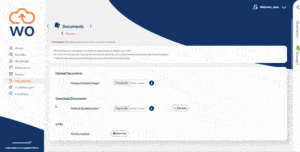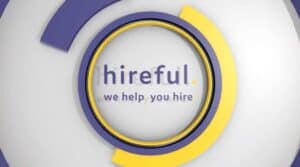The prospect of completely changing the way you manage new hires does not need to be unnerving.
You may understand the problems with your existing manual onboarding approach and the potential benefits of switching to onboarding software however so many companies stick with an outdated onboarding approach, usually involving a mix of posted paper documents, Excel spreadsheets and emails.
It’s a slow and inefficient way of working. The recent ‘Welcome Aboard’ study found that more than two-thirds (71%) of new hires in the UK have incomplete paperwork when they start.
So if you’re looking to make the switch, here’s a guide to help make sure it a smooth, simple and hassle-free changeover.
Work out the ROI
The benefits of switching to a digital system in terms of speed and efficiency is that processing times can be cut from weeks to days.
A paperless approach removes a large swathe of administrative costs in terms of HR time and all of the resources involved in printing, preparing and posting documentation. It delivers a fast ROI (Return on Investment).
But the benefits of upgrading to a digital approach go beyond administrative efficiency. It provides the tools needed to transform the experience for those joining your organisation.
Creating a positive and welcoming onboarding ‘journey’ helps to minimise the risk of dropouts, improves productivity and helps to build a strong and stable workforce.
Understand the technology
The technological jargon can make moving to a digital approach seem more complex than it actually is. It basically offers a simpler and more effective way to do the tasks required to bring new people into your business.
A system such as Webonboarding provides handles everything via an online portal. It creates a completely paperless process with documents able to be signed using digital signatures.
For the end-users, whether it’s HR professionals or new starters, it means a simpler way of doing things. All of the onboarding tasks are tracked in real-time with everybody kept informed of what they do. New hires can also accept and sign their offer, check documents and add personal details all via a mobile phone.
So while the tools are different, the basic elements of onboarding remain the same. A digital approach can be used to improve an existing hiring process or it may inspire a completely fresh approach.
You can find a full overview of how digital onboarding management works here:
Review your onboarding approach
With an understanding of the technology and the potential benefits it can bring, it’s time to apply this knowledge to your existing approach. In what ways can you remove bottlenecks, strip away unnecessary complexity and improve the overall experience?
How would you like people entering your organisation to be treated and how can you make that happen? You should talk to people who have been through your onboarding process – what were the positives and negatives?
You also need to look at how your onboarding approach can be maintained over time, building a system which has the scalability and flexibility to handle future growth.
It may be that your existing approach ticks many of these boxes. Or it may require a more fundamental rethink if you’re going to maximise the benefits of making the move. At the end of this phase, you should have a clear idea of what your end goal is.
Find the right solution and make a plan
When you know what you want to do, you can work out the best way to achieve it. Create a list of the requirements or must ‘haves’.
You also need to consider the available customer support. How much support can the provider offer during the installation and transition phase? What kind of resources do they have to help support end-users?
Start planning the changeover. Take full advantage of any support or resources that are required to ensure a smooth transition.
The changeover can be handled using a phased approach to identify any issues before it’s fully rolled out. An important part of a successful transition is good communications – making sure everyone knows what’s happening.
One effective approach is to designate an onboarding ‘champion’, an employee who’s tasked with promoting and supporting the system within a workplace. It’s somebody to turn to for help for anyone unsure about the new approach.
Summary
Changing the way you manage new hires is nowhere near as daunting as it first seems. In return for some short term disruptions, an organisation receives the long term benefits of a much faster, simpler and effective way of managing new hires. Once you have taken care of the digital side, you can focus on what is important, your people. Book a discovery call with us here.




